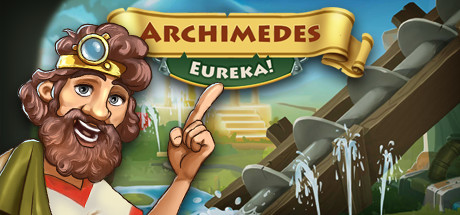by
Damien F.
Mackey
“Thereupon one of the [Egyptian] priests, who was of a very great age,
said: O Solon, Solon, you Hellenes are never anything but children, and there
is not an old man among you.
Solon in return asked him what he meant. I mean to say, he replied,
that in mind you are all young; there is no old opinion handed down among you
by ancient tradition,
nor any science which is hoary with age”.
Plato’s
Timaeus
The view of the
ancient Egyptian priest – {who would proceed to recount to Solon the legend of
Atlantis} - that the Greeks (“Hellenes”) were not at the forefront of all
culture and science, is quite different from that of a Greek taxi driver I once
encountered according to whom the Greeks were the inventors of practically
everything: cities; philosophy; mathematics; logic; sculpture; and so on.
The celebrated
encounter between the Egyptian priest and the wise Athenian statesman, Solon,
as narrated in Plato’s Timaeus, could
not really have happened - {though it was loosely based on real history} - because
Solon himself was (Plato also) an invention of the Greeks. For the wise Solon
read the wise Solomon, who was in fact an ancient Israelite king, a Jew, his
name being a very by-word for wisdom.
King
Solomon certainly had his dealings with Egypt. In fact the Bible loses interest
in the great man at about the very point at which he is said to have engaged in
horse-trading with Egypt (I Kings 10:28). It is then that secular history takes
over, with Solomon morphing into Senenmut (Senmut), a famous guest of female Hatshepsut’s
in Egypt’s Eighteenth Dynasty. According to one
of Senenmut’s statues: ‘I was in this land under [her]
command since the occurrence of the death of [her] predecessor'. See e.g. my
article:
Solomon
and Sheba
The presumed
laws of Solon have been identified by Edwin M. Yamauchi as being, at least in
part, late Jewish (era of Nehemiah): “Two reformers compared - Solon of Athens
and Nehemiah of Jerusalem” (The Bible World, 1980, pp. 269-292).
In
“Solomon and Sheba” I wrote this of Greek, now architectural, appropriation:
Much has been attributed to the Greeks that did not
belong to them - e.g. Breasted … made the point that Hatshepsut's marvellous
temple structure was a witness to the fact that the Egyptians had developed
architectural styles for which the later Greeks would be credited as originators.
Given the Greeks' tendency to distort history, or to appropriate inventions,
one would not expect to find in Solon a perfect, mirror-image of King Solomon.
[End of quote]
Well before all
of this, back in the time of the mighty Akkadian king Naram-Sin (c. 2200 BC,
conventional dating), artists were already ‘out-Greeking’ the Greeks. M. Van de
Mieroop writes this of a piece of sculpture at the time (A History of the Ancient Near East ca. 3000 – 323 BC, Blackwell,
2004, p. 66. Emphasis added):
Sculpture in the round now
showed enormous refinement. The copper Bassetki statue (bearing the text
regarding Naram-Sin’s deification), for example, shows great naruralism in the
representation of the human body. It presents a technological breakthrough,
too, as it was made with the lost wax
technique, a technique long credited to the classical Greeks.
[End of quote]
Long before even
that, at the site of Göbelki Tepe (c. 12,000 BC, conventional dating), cultural
and artistic innovations apparently long anticipated the Greeks:
The presence of art in the buildings, the substantial effort that must have
been involved in making and erecting them, and a lack of evidence for any
permanent settlement in the area, led Schmidt and others to conclude that
Göbekli must have been a sacred place where pilgrims traveled to worship, much
like the Greek ruins of Delphi or Olympia. If that interpretation is true it
would make the buildings, which date back more than 10,000 years to the early
Neolithic, the oldest temples ever found.
“For Schmidt, Göbekli Tepe was primarily a sacred site. Its built
environment was a nondomestic communal space within a geography of Stone Age
pilgrimage, like a Greek amphictyony for hunter-gatherers”.
Finally, we have
found previously that the supposed C3rd BC Greek mathematician, Archimedes, has
been accredited with an invention that the neo-Assyrians were already using centuries
before that time: the screw pump.
Thus I wrote in:
Sobna
(Shebna) the High Priest
Dr. Stephanie Dalley of Oxford University’s Oriental Institute and
author of the fascinating book, The Mystery of the Hanging Garden of Babylon,
has explained that the ancients commonly confused Sennacherib of Nineveh with Nebuchednezzar
of Babylon.
And she has expertly argued that the famed ‘Hanging Gardens’ of antiquity
were situated in Nineveh, and not in Babylon. Moreover, Dr. Dalley has
been able to demonstrate (actually in situ) that the screw pump, famously attributed to Archimedes (C3rd BC),
was already being used by the Assyrians about half a millennium earlier, at the
time of Sennacherib.

No comments:
Post a Comment